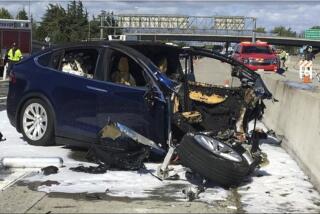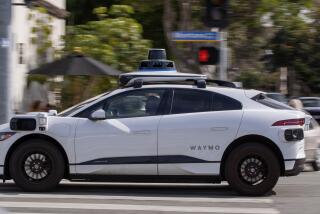Do jobs numbers indicate the strength of California’s economy? Not really
On Friday, California will release its monthly jobs report, which will say something about the health of the state’s economy. What it’s saying, exactly, may not be clear.
Every time the state releases jobs numbers, reporters (including this one) scramble to digest them and offer some context.
But most economists point out that the individual snapshots are not in and of themselves ideal barometers of the job market, and they can be misleading.
The numbers often get dramatically revised upward or downward in subsequent reports, or turn out to be random outliers.
One month’s results will not reveal much, unless they’re stacked against several past reports covering a longer period of economic activity.
“Proceed with caution here,” said Chris Thornberg, a founding partner at Beacon Economics, based in Los Angeles. “This is a number based on a statistical sample that will be revised next month. It may be revised the following month, [and] it will absolutely be revised in January of the next year.”
Part of the problem is that jobs that don’t necessarily sustain a family or even an individual are counted in employment statistics. The 440,300 jobs that employers officially added in the last 12 months include anyone who worked at least one hour per week.
The unemployment data, which comes from a separate and smaller survey of households, also has shortcomings — it includes people who work for themselves but may not have a stable source of income.
“These numbers only tell a part of the employment story because they don’t pick up a lot of the structural shifts in our state economy,” said Michael S. Bernick, an economist who directed California’s labor department, called the Employment Development Department, from 1999 to 2004.
One fundamental shift that more than a decade of jobs reports have tracked is the slow bleeding out of manufacturing jobs in California.
Since 2000, the state has lost more than 560,000 manufacturing jobs, keeping pace with the broader trend of a depleting corps of companies that make things in America.
Since the recession, the rest of the country has seen manufacturing jobs reappear at a faster rate than in California. So far this year, the state has lost more than 10,000 manufacturing jobs. Last year, it added 7,000 of those positions over the same period.
“Labor, real estate and various forms of regulation make [California] not a low-cost location,” said UC Berkeley economist Enrico Moretti.
“If you’re in traditional manufacturing, it’s a lost cause,” he said. “There are going to be cheaper states within the U.S., and much cheaper countries in the world.”
California is still hanging onto an impressive 1.28 million manufacturing positions, 10% of the country’s total. Moretti said that market will continue to shrink as the things that get made in America become more complex, requiring fewer and smarter workers.
Automation is part of that. As companies pour more money into machines that do the work humans once performed, the sector has become more efficient. Today, manufacturing output has almost reached the record high achieved in the first quarter of 2008, federal data show.
The reports also suggest that the so-called California miracle — referring to the extraordinary surge in jobs in the state following the Great Recession — may have reached its peak.
Jobs are growing slower this year than they did last year, partly because so many people who want a job already have one. The state unemployment rate in May was 5.2% and has been plunging steadily since 2010, when it reached 12.2%.
There may be more stubborn obstacles preventing California from returning to the 3% or higher growth rates of the late 1990s, though. The UCLA Anderson Forecast puts the growth rate for 2016 at 2%, and the expected rate for 2017 at 1.6%.
As boomers retire en masse, the pool of available workers has shrunk. That puts a natural limit on the number of jobs in the state, economists say.
Another problem is that the people who need work aren’t properly trained for some of the available jobs.
“There is a basic mismatch between the skills the labor market has and the skills the labor market needs,” said Thornberg, the Beacon Economics founding partner.
California is home to a swath of “economic castaways” who didn’t go to college and are now struggling to attract the attention of high-tech employers, Thornberg said.
“There are a bunch of people who made bad decisions 30 years ago who are really paying the piper,” he said.
Follow me @NatalieKitro on Twitter
ALSO
How a former Wal-Mart executive is helping the Air Force cut energy costs
Elon Musk reveals Tesla’s ‘master plan’: It includes trucks, buses and ride sharing
More to Read
Inside the business of entertainment
The Wide Shot brings you news, analysis and insights on everything from streaming wars to production — and what it all means for the future.
You may occasionally receive promotional content from the Los Angeles Times.











